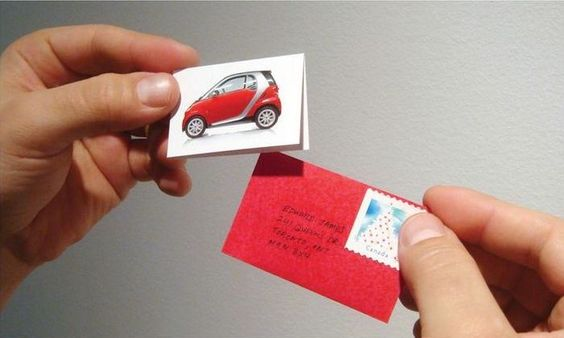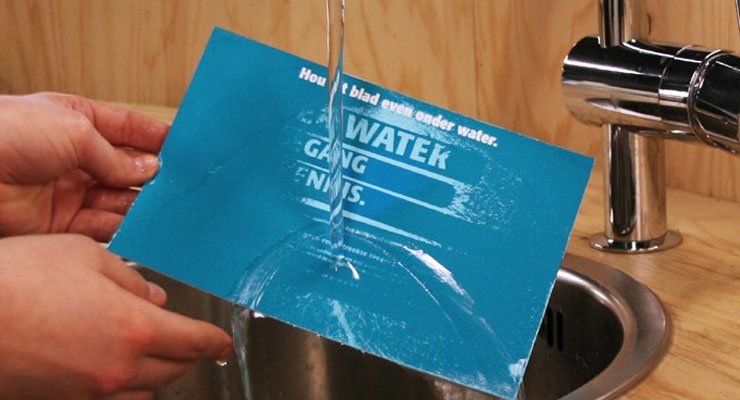Oh yes, wait a minute Mister Postman, Please Mister Postman, look and see (Oh yeah) If there's a letter in your bag for me...a coupon for 40% off personal pan pizzas at Dominos, valid any weekday (Please, Please Mister Postman).

We all get that it's a challenge connecting with consumers. Digitally, the market is flooded with newsletters and tweets and emails and coupons and love letters and Facebook posts. So, how do you grab their attention? Well, why not try connecting the intelligence of a digital medium to the real world?
It's time to take a look forward, into the past.
Direct mail creates a novelty, engaging, targeted interaction with a client, giving you the chance to implement some omnichannel coordination and precise targeting.
By integrating data, direct mail can gain qualities only often achieved by digital means, with additional benefits that come with the tangibility and novelty of the medium. In a USPS survey of 75 marketing decision-makers, respondents saw high 40% conversion rates when they combined direct mail with digital channels. Plus, 42% of direct mail recipients either read or scanned the mail they got. That's pretty high compared to email marketing.
More stats for you: direct mail requires 21% less cognitive effort to process the information. Direct mail recipients purchase 28% more items. Direct mail recipients also spend 28% more than people who don't get the same piece of mail. Wowee.
So, why is the medium making it's (second) rounds?
Well, in one word - Lockdown.

"Using direct mail marketing during the Covid-19 pandemic is improving the profile of businesses, as people often have a full inbox and can easily skim past emails without really noticing," says Selectabase.co.uk.
"People are also applying more stringent online security protection because they are being bombarded with emails. Digital marketing material may end up in the “spam” folder if it’s seen as junk mail by the filters."
"They continue: Another consequence of spending more time at home online is visual fatigue, or “digital fatigue”, when people are reporting eye strain as a result. They experience physical discomfort after prolonged exposure to a screen including a computer, laptop, or tablet. These factors mean online marketing may be less effective."
Plus, direct mail has a high ROI.
Direct mail has a median ROI of 29%, putting it in third, behind email and social media marketing. So, combining all elements makes for a pretty successful campaign.
Every good marketing campaign uses multiple channels. For example, you might choose to use email and direct mail. So, send the letter. Then, a week after it's been received, follow up with an email. For every piece of printed mail, you can send up to four emails. Don't forget to include a strong call to action in each piece, to create a sense of urgency to respond. Then, you can determine which medium works best for your campaign. This not only figures out your next step, but grabs your clients attention and drives them to action.
A Trusted Channel
Long gone are the days where people are afraid the FBI is opening their birthday cards from their Great Aunt. Nowadays, people are concerned with online privacy. This, combined with the overwhelming amount of online messaging can leave your campaigns in the dust. This oversaturation can mean your clients might have a few extra barriers when it comes to engaging with, and trusting, your brand.

"Our research found that mail drives trust and adds authenticity to communications, with 70% of consumers finding that mail makes them feel valued," says Market Reach's Maria Michael.
"The latest figures from IPA Touchpoints 2020 support this and show trust from consumers in mail has increased, whilst trust in digital and social channels has shrunk"
So, combining this tangible approach with a digital channel means that brands can deliver a personalised and relevant message, which is attention grabbing, but can drive action too. In fact, 70% of people have been driven towards online activity due to the use of direct mail.
A Rare Find
The internet is FULL of marketing.
But people have room on the fridge for as many Tesco Coupons they can get their hands on.
Direct mail can take way more time and way work, so it tends to be far less common. This is where it's effectiveness lies.
Also, direct mail is tangible. It basically fills a space in someone's house, as opposed to email which clutters junk folders and can be forgotten about.
Try Some Creativity
Direct mail has a plethora of chances to really test out creativity. Because it is a physical product, there's a real opportunity to have fun and impress your clients.
For example, Smart Car's mail campaign:

Nothing fancy, no moving parts, no fireworks. Just knowing what blends into the background, and doing the opposite. People expect either standard sized, or oversized post. So, it not only stands out as a piece of mail, but summarises what makes the brand itself unique - it's compact, idiosyncratic size.
Think about the timing of your mail, too. Just like with email marketing, you can send messages to people on their birthdays, or other special occasions. I mean, who doesn't love a physical birthday card.
This postcard has an additionally interactive element:

It contains instructions to run it under water, and when the client does, the message shows.
Consider the structure of the card, like this campaign from IKEA:

If you create something of value to your customer, they are likely to keep the note in their household, and then act on the message in the mail. Interactivity also means a message will be more likely to be remembered, and retained.
Direct mail is memorable. It stands out. It doesn't just fly by like the 1000s of digital adverts we see every day. And, it's a...
Multi-sensory Experience
The physicality of direct mail is it's biggest selling quality.
It literally gets your message into your client's hands. But don't think it just stays like this. Just boring old, normal mail. Yuck, who even uses paper nowadays?

New innovations such as 3D mailing packs, QR codes, and even AR elements can make mail exciting and even more interactive.
"Mail can also appeal to all five senses; it can make use of touch, sight, sound, taste and smell to influence behaviour. This multi-sensory experience allows brands to create a tangible, real world connection with audiences and build a stronger relationship that drives higher recall," explains Maria.
So, what are the do's, and don'ts?
Do: Drive your audience to explore your brand further, with digital elements.
Try creating some valuable digital marketing pieces, including eBooks and reports, to address your audience's pain points, and to encourage them to meet your brand online. You can even use customised URLs to track results, and know where your leads are coming from. Then, you can base future behaviours on this research. Maybe even consider gating this content, and requiring a name and email address, and move these visitors through your sales funnel.
But make sure the content sticks with your storytelling!
Do: Define your objectives with the campaign
Have a clear and distinct idea what you want from this campaign. Is it to drive sales? Is it to create awareness? Is it to influence behaviours?
You'll also need a clear picture of your audience, and how your campaign can appeal to them. Standard stuff. But using this, you can determine which way you should lean more, focusing more on direct, or digital. Plus, with this, you can make it personal.
"A major strength of addressed direct mail is the ability to personalise and tailor the message. Marketers should leverage data to deliver highly personalised physical communications - research shows that personalised mail is 35% more likely to drive an actual purchase than unaddressed mail," says Maria.
"But to make the most of your personalised message – be sure to include a clear 'call to action' that drives a response from the recipient. Whilst younger audiences are more receptive to mail than ever before they have the least experience of it as a medium. Ensure that both creative and copy clearly signpost the routes to action for the recipient. "
Do: Only use on call to action
People might get a bit lost if you give too many directions. Get your letter. Go to this site. Go now to this site. Get the letter out again. Scan this QR code. Follow this map to reach the buried treasure. It's a lot to ask.
Don't: Hard sell in the first mailing
The first piece of mail is to spark conversation and interest. This builds a framework for a future sale, and a future relationship. Don't ask for much more from your customer than to meet you online.
Don't: Give everything away
Creative direct mail comes with a fun element of mystery. Key in on the audience's pain points, then drive them to 'discover more', with the next step. This might be to visit your website, or twitter.
"For example, “Check out Twitter to find the answer” or “Download this case study to learn how you can increase sales by 400 percent in 4 weeks or less"," suggests Nicki Howell, of Business2Community.com.
"Keep customers in suspense so you can move them from one channel (direct mail) to another channel (digital) more seamlessly."
